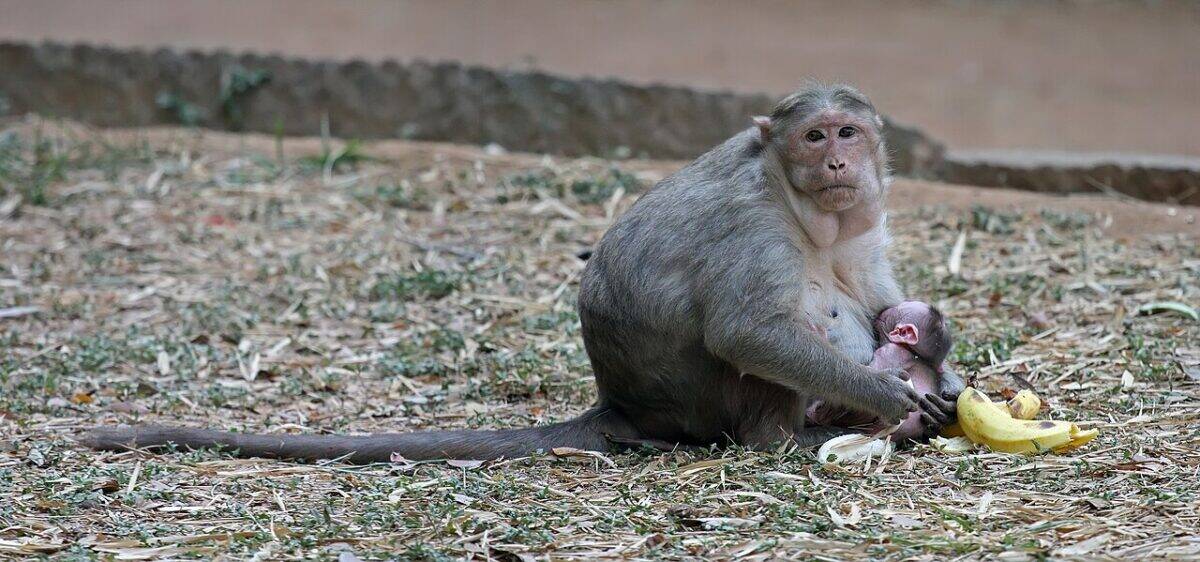India’s cities are experiencing a remarkable demographic shift, not just in human populations but also among its native wildlife. Among these urban newcomers, the bonnet macaque (Macaca radiata) has become increasingly visible in metropolitan areas across southern India. These medium-sized monkeys, easily identified by their distinctive cap-like whorl of hair on their heads resembling a bonnet, have traditionally inhabited forest regions throughout the Western and Eastern Ghats mountain ranges. However, over the past few decades, these highly adaptable primates have steadily expanded their territory to include urban landscapes.
The migration of bonnet macaques into cities represents more than just an interesting ecological phenomenon—it reflects profound changes in India’s landscape and the complex relationship between humans and wildlife in the 21st century. With rapid urbanization consuming once-wild spaces at an unprecedented rate, these monkeys have found themselves at a crossroads: adapt to human-dominated environments or face population decline. Their increasing presence in cities tells a story of remarkable resilience, opportunistic behavior, and the unintended consequences of human development on wildlife habitats.
Who Are the Bonnet Macaques?
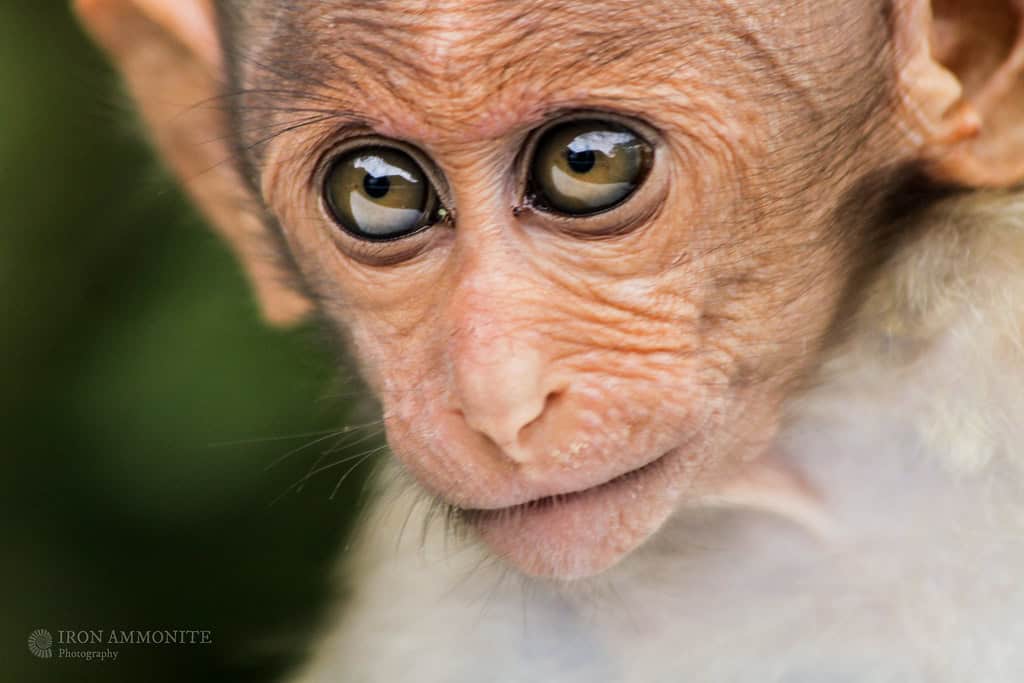
Bonnet macaques are endemic to southern India, primarily found in the states of Karnataka, Tamil Nadu, Kerala, Andhra Pradesh, and Telangana. Named for the characteristic cap-like arrangement of hair on their crown, these primates typically weigh between 5-9 kg (11-20 pounds), with males generally larger than females. Their fur ranges from brown to gray, with lighter coloration on their undersides, and they possess expressive faces with prominent eyes that communicate a range of emotions and intentions to other members of their troops.
As highly social animals, bonnet macaques live in multi-male, multi-female groups ranging from 20 to 60 individuals. These troops maintain complex social hierarchies and engage in sophisticated communication and social behaviors, including grooming, play, and various vocalizations. Traditionally, they’ve thrived in diverse habitats including deciduous forests, evergreen forests, and woodland areas, displaying remarkable dietary flexibility as omnivores that consume fruits, nuts, seeds, invertebrates, and occasionally small vertebrates. This adaptability in both diet and habitat preference has proven crucial to their successful transition to urban environments.
Habitat Loss: The Primary Driver of Urban Migration
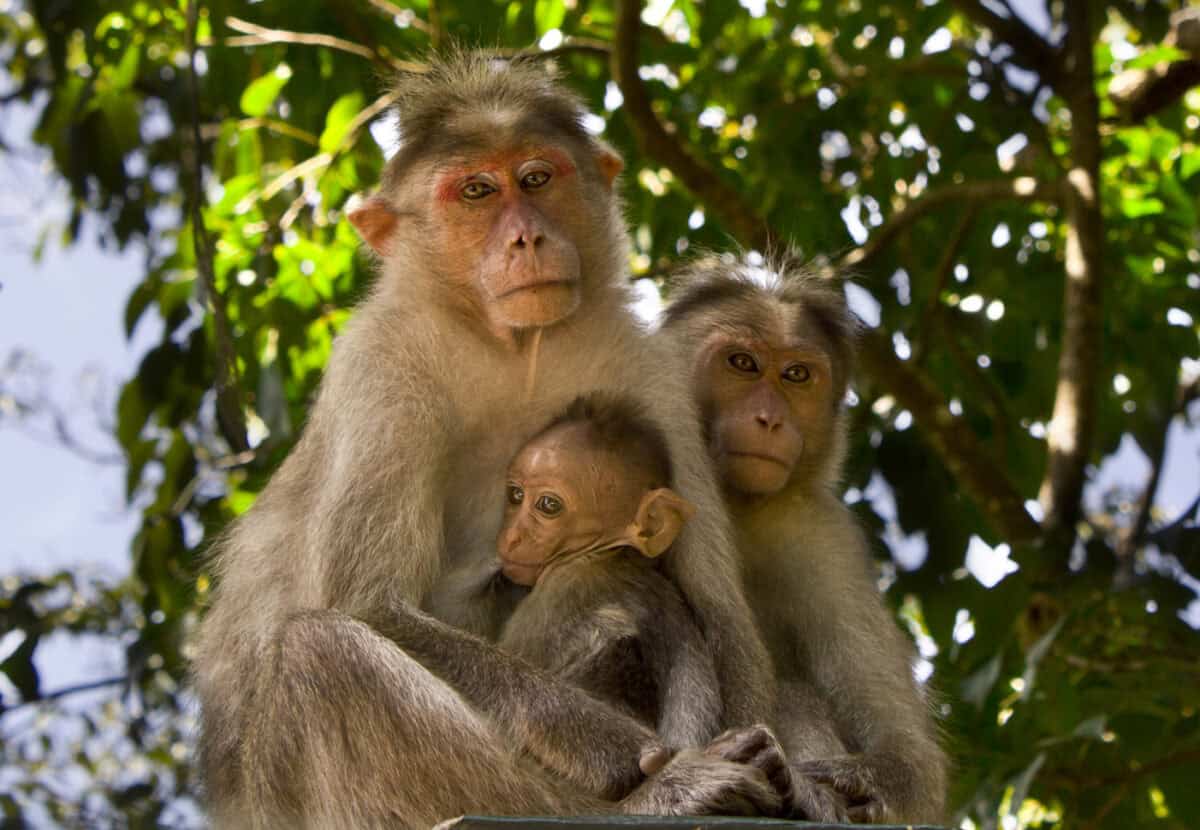
The most significant factor pushing bonnet macaques into Indian cities is the accelerating loss of their natural forest habitats. India has experienced dramatic deforestation over recent decades, with an estimated 15% of forest cover in the Western Ghats—a key bonnet macaque habitat—lost between 1920 and 2013. According to data from the Forest Survey of India, despite conservation efforts, forest fragmentation continues at an alarming rate, particularly in the biodiversity-rich regions of Karnataka and Tamil Nadu, where these macaques traditionally thrive.
As forests are converted to agricultural land, plantations, roads, and expanding urban centers, bonnet macaques find themselves with diminishing options. The fragmentation of continuous forest into isolated patches is particularly problematic, as it disrupts the macaques’ natural movement patterns and reduces access to diverse food sources. A 2018 study published in the International Journal of Primatology found that bonnet macaque populations have declined by approximately 65% in some parts of their range over the past 25 years, primarily due to habitat conversion. This severe pressure on their natural environment has essentially forced these adaptable primates to seek alternative living spaces, with urban areas offering unexpected opportunities.
The Urban Buffet: Food Availability in Cities

One of the most powerful attractions drawing bonnet macaques into urban environments is the ready availability of food sources. Cities offer a cornucopia of options that these opportunistic omnivores quickly learn to exploit. From open garbage dumps and unsecured waste bins to food offerings at temples and tourist sites, urban areas provide a consistent, year-round food supply that can be more reliable than seasonal forest resources. Research conducted at the Indian Institute of Science in Bangalore found that urban macaque troops spend approximately 60% less time foraging than their forest-dwelling counterparts, demonstrating the caloric efficiency of city life.
The cultural practice of feeding monkeys, rooted in Hindu traditions that revere them as representatives of the deity Hanuman, further reinforces this behavior. In many Indian cities, deliberate feeding by residents and visitors has created a dependable food source that anchors macaque troops to urban spaces. However, this human-provided diet often lacks the nutritional balance of natural foods, consisting heavily of processed items high in sugar and salt. Studies have shown that urban macaques often exhibit higher body weights and different health profiles compared to their forest-dwelling counterparts, reflecting the impacts of this dietary shift.
Behavioral Adaptations to Urban Life
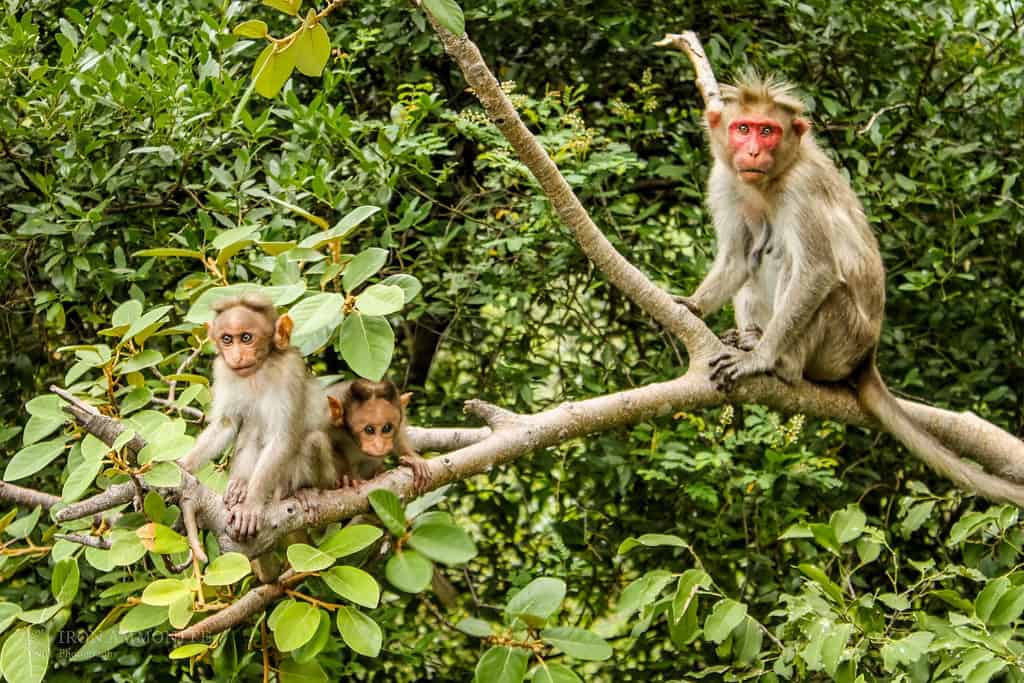
Bonnet macaques have demonstrated remarkable behavioral plasticity in adapting to urban environments. Research conducted across cities like Bangalore, Mysore, and Chennai has documented significant changes in their activity patterns, social structures, and problem-solving abilities. Urban troops have been observed shifting their peak activity periods to align with human schedules, becoming more active in early mornings and evenings when human food is more accessible while resting during the busiest midday hours to avoid conflict. This contrasts with forest populations that maintain more consistent activity throughout daylight hours.
Their cognitive abilities have proven particularly valuable in navigating urban challenges. Bonnet macaques quickly learn to open doors, unzip bags, and even unscrew bottle caps to access food. A 2020 study published in the journal Animal Cognition documented urban macaques using increasingly sophisticated techniques to obtain food from difficult containers compared to their rural counterparts, suggesting enhanced problem-solving abilities in city-dwelling populations. Social learning appears to play a crucial role, with juveniles observing and rapidly adopting successful strategies from older troop members. These behavioral adaptations demonstrate how quickly these primates can adjust their innate capabilities to thrive in novel human-dominated landscapes.
Urban Infrastructure as Habitat

The physical structure of Indian cities provides bonnet macaques with alternative versions of the resources they traditionally seek in forests. Tall buildings, temples, water tanks, and other structures offer safe sleeping sites comparable to the tall trees macaques prefer in natural settings. These elevated positions provide protection from ground predators and allow for comprehensive monitoring of their surroundings. Researchers from the National Institute of Advanced Studies in Bangalore have documented how urban troops establish consistent sleeping sites on buildings that closely mirror the height and security characteristics of their preferred forest sleeping trees.
Water availability, often a limiting factor in natural environments, is typically more consistent in urban areas through public taps, fountains, and ornamental water bodies. Electrical wires, railings, and rooftops serve as movement corridors similar to branches in forest canopies, allowing macaques to traverse city spaces while minimizing time on the ground where conflicts with humans and dogs are more likely. Temple complexes have proven particularly suitable habitats, offering a combination of structural complexity, water sources, regular food provisioning, and often a higher degree of tolerance from humans due to religious associations. These environmental parallels between urban structures and natural habitats have facilitated the macaques’ transition to city life.
Human-Macaque Conflict in Urban Settings
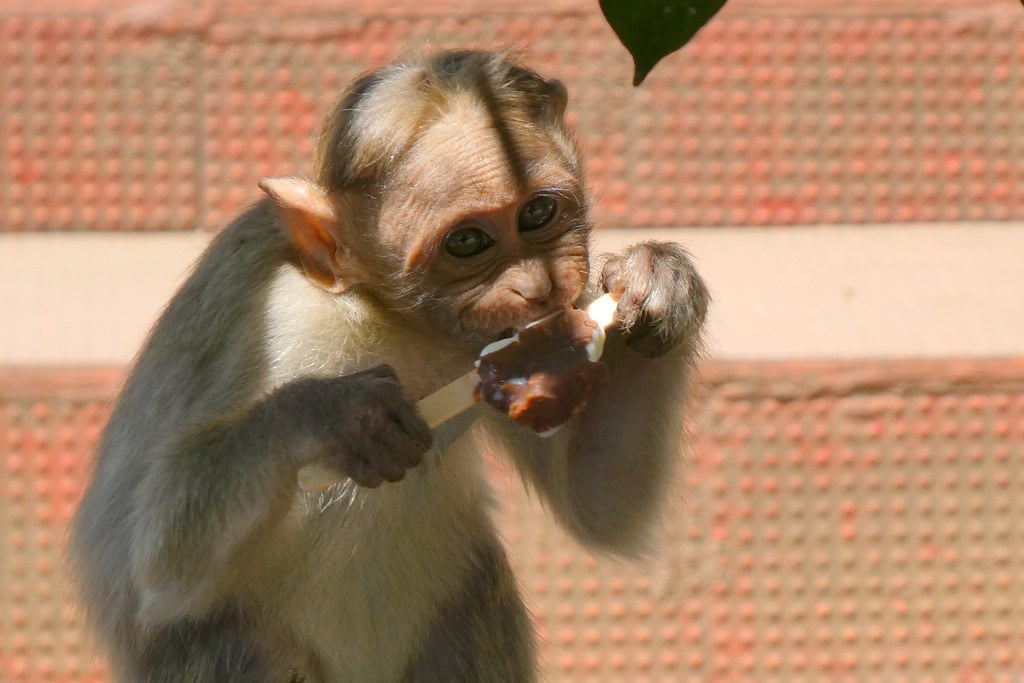
The integration of bonnet macaques into urban environments has not been without friction. As their populations become established in cities, human-wildlife conflict incidents have increased substantially. Common complaints include food snatching, property damage, and occasional aggression toward people. In Bangalore alone, municipal authorities reported over 2,000 monkey-related complaints in 2019, a number that has been steadily rising. The economic costs are significant—damage to homes, offices, and vehicles runs into millions of rupees annually, while agricultural losses in peri-urban areas where macaques raid crops add further financial burden.
Public health concerns also arise from the close proximity between humans and macaques. While zoonotic disease transmission from bonnet macaques to humans is relatively rare compared to some other wildlife species, the potential exists for pathogens to cross species boundaries in these shared environments. Additionally, bites from macaques, usually occurring during food-snatching incidents or when humans approach too closely, require rabies post-exposure prophylaxis as a precautionary measure. The Indian Journal of Medical Research reported approximately 1,000 monkey bite cases annually in major south Indian cities, creating both health concerns and economic costs within the healthcare system.
Cultural and Religious Dimensions
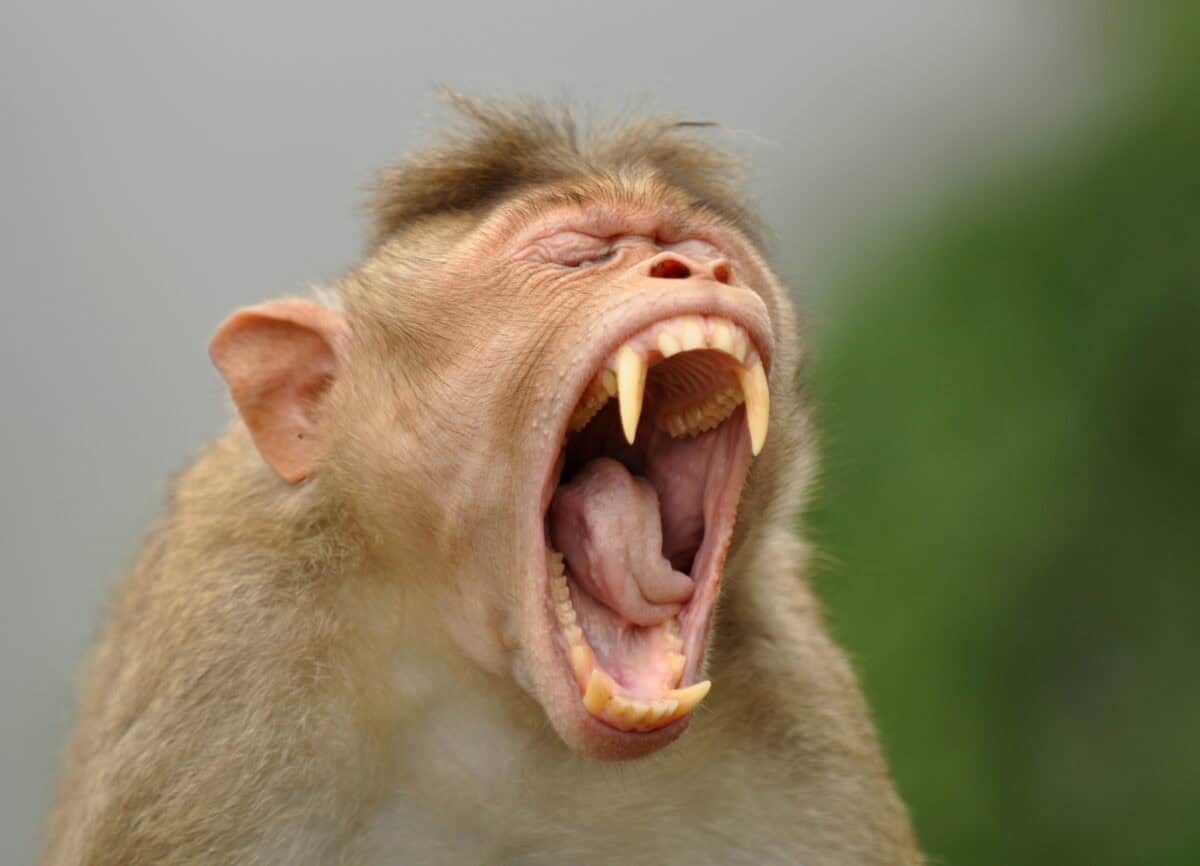
The relationship between Indians and macaques is deeply influenced by cultural and religious factors that create a complex dynamic unlike that found in many other countries experiencing wildlife conflicts. In Hindu tradition, monkeys hold sacred status as representatives of Lord Hanuman, the monkey god revered for his devotion and strength. This religious connection creates an inherent contradiction in how urban residents respond to macaques—the same animals may be simultaneously viewed as divine beings worthy of offerings and as nuisance wildlife causing property damage. Temple complexes throughout India often maintain resident macaque populations that are deliberately fed and protected, creating core areas from which troops expand into surrounding neighborhoods.
This cultural ambivalence significantly impacts management approaches. Many traditional Hindu communities oppose relocation or population control measures that might harm the macaques, while simultaneously expressing frustration about the problems they cause. A survey conducted in Bangalore found that 68% of respondents reported negative experiences with urban macaques, yet 72% opposed lethal management methods on religious or ethical grounds. This cultural complexity necessitates nuanced management strategies that respect religious sensitivities while addressing legitimate human concerns. The successful integration of macaques into urban environments requires understanding these cultural dimensions rather than approaching the issue as a purely ecological or public health matter.
Changes in Macaque Social Dynamics

Urban living has precipitated notable changes in the social structure and dynamics of bonnet macaque troops. Studies comparing forest and urban populations have documented significant differences in group size, composition, and social behavior. Urban troops tend to fragment into smaller units averaging 15-25 individuals, compared to forest groups that commonly reach 40-60 members. This fragmentation appears to be an adaptation to the patchy distribution of resources in cities and allows more efficient exploitation of limited urban space. Researchers from the University of Mysore have observed that these smaller urban groups can more effectively monitor and defend high-value food sources like garbage dumps or temple offering areas.
Interestingly, the social hierarchies within urban troops show more volatility than their forest counterparts. The traditional dominance structures based primarily on age, size, and coalition support are increasingly influenced by individual adaptability to urban challenges. Macaques that excel at obtaining food from human sources or navigating urban hazards often gain social advantages regardless of their traditional standing. Juvenile macaques, with their quicker learning abilities and greater behavioral flexibility, frequently develop urban-specific skills faster than adults. This creates intriguing intergenerational dynamics where younger animals may assume leadership roles in certain contexts, particularly when interacting with human-dominated environments—a reversal of the typical age-based hierarchy observed in natural settings.
Impact on Macaque Health and Welfare
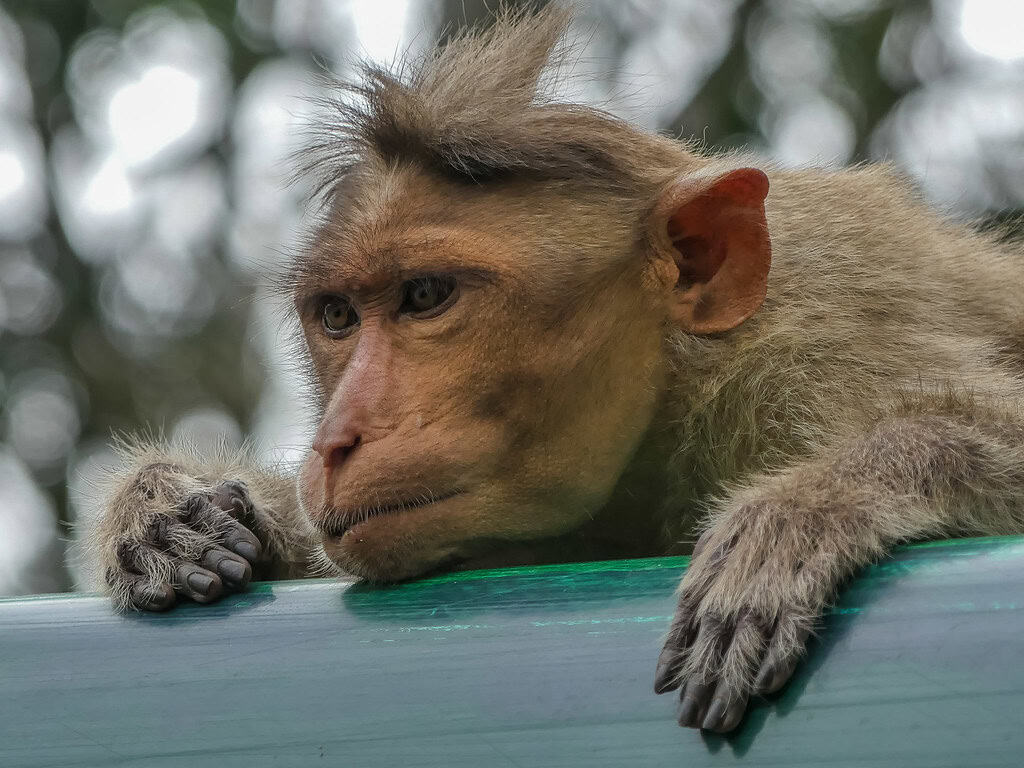
The shift to urban living has produced mixed consequences for bonnet macaque health and welfare. On one hand, urban macaques typically maintain higher body weights and experience less seasonal food scarcity than their forest counterparts. A comparative study conducted by wildlife veterinarians in Karnataka found that urban macaques showed fewer signs of malnutrition and parasite loads related to poor nutrition. However, city life introduces new health challenges. Urban macaques exhibit higher rates of traumatic injuries from vehicle collisions, dog attacks, and human conflicts. Researchers documented that approximately 17% of urban macaques showed evidence of previous injuries compared to just 4% in forest populations.
The human-derived diet of urban macaques, while calorically abundant, often lacks nutritional balance. Analysis of urban macaque food consumption patterns revealed diets high in processed carbohydrates and fats but deficient in certain vitamins and minerals found in their natural forest foods. This dietary shift has been associated with emerging health issues including dental problems, obesity, and potential metabolic disorders similar to those seen in humans consuming highly processed diets. Additionally, exposure to environmental pollutants presents another concern. Studies detecting elevated levels of heavy metals and other contaminants in tissue samples from urban macaques raise questions about long-term health impacts of city living on these adaptable primates, potentially affecting their reproductive success and longevity.
Management Strategies and Solutions
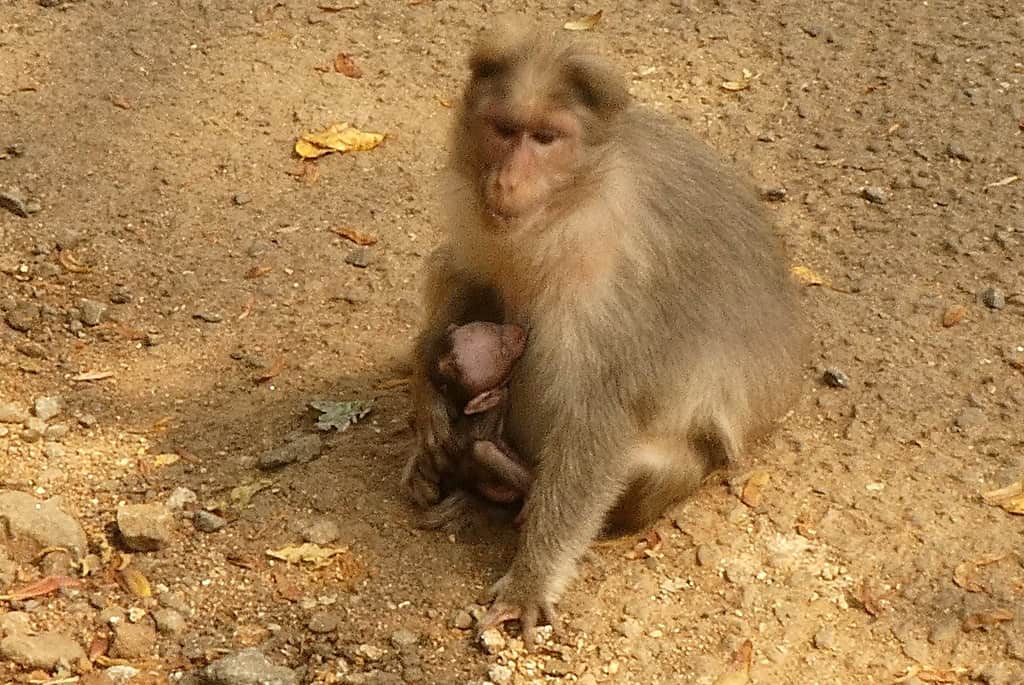
As bonnet macaques become established urban residents, Indian municipalities have implemented various management approaches with mixed success. Translocation, once widely practiced, has proven largely ineffective and ethically problematic. A 2018 assessment by the Indian Institute of Science found that over 70% of translocated troops either returned to their original territory or faced severe hardship in unfamiliar environments. More successful interventions have focused on modifying human behavior and urban infrastructure. Secure waste management systems, including macaque-proof garbage bins introduced in Mysore and Bangalore, have reduced food rewards that attract and sustain urban macaque populations. Similarly, education campaigns teaching residents and tourists proper food storage and discouraging deliberate feeding have shown promising results in reducing conflict.
Urban planning approaches that incorporate “macaque-aware” design elements are gaining traction in newer developments. These include creating green corridors that allow macaques to move between parks and forest fragments without entering residential areas, installing natural barriers like thorny plants around sensitive areas, and ensuring that building designs minimize potential roosting or entry points. Some innovative cities have experimented with designated feeding areas at the urban periphery, drawing macaques away from dense human settlements while providing controlled nutritional support. Long-term management success appears to depend on integrated approaches that combine physical infrastructure changes, public education, and targeted interventions based on scientific understanding of macaque behavior rather than reactive responses to conflict incidents.
Conservation Implications of Urbanization
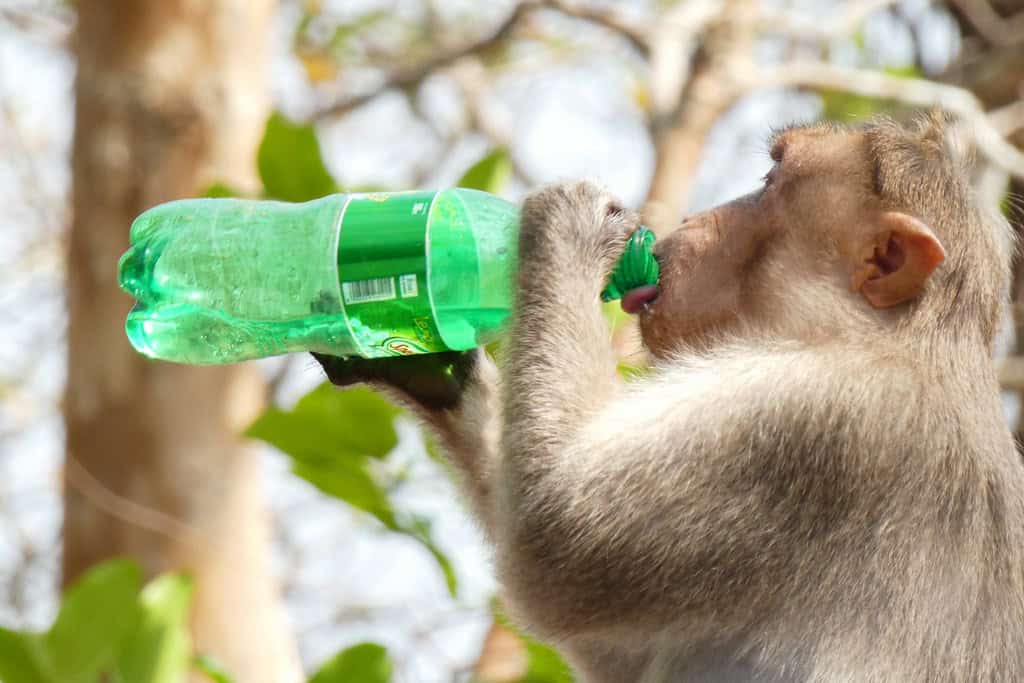
The urbanization of bonnet macaques presents an interesting conservation paradox. While the species as a whole is classified as “Least Concern” on the IUCN Red List, research indicates significant population declines in their natural forest habitats. A 2021 assessment estimated that forest-dwelling populations have decreased by approximately 50% since the 1980s due to habitat loss and fragmentation. In this context, urban areas potentially serve as refuge habitats that may be critical for maintaining regional populations. Conservation biologists have begun recognizing that urban-adapted populations might represent an important component of the species’ overall resilience in a rapidly changing landscape.
However, questions remain about the long-term genetic and behavioral implications of this urban shift. Studies comparing genetic diversity between urban and forest populations have found evidence of reduced genetic variation in some isolated urban troops, raising concerns about inbreeding and reduced adaptive potential. Similarly, the transmission of ecological knowledge—such as which wild foods are edible and how to find them—may be diminishing in urban populations that rely heavily on human-derived food sources. This could potentially reduce their ability to readapt to natural environments if necessary in the future. Conservation strategies are increasingly focusing on maintaining connectivity between urban green spaces and peripheral forest patches, allowing gene flow while reducing the intensity of human-macaque conflict in dense urban centers.
The Future of Urban Bonnet Macaques in India
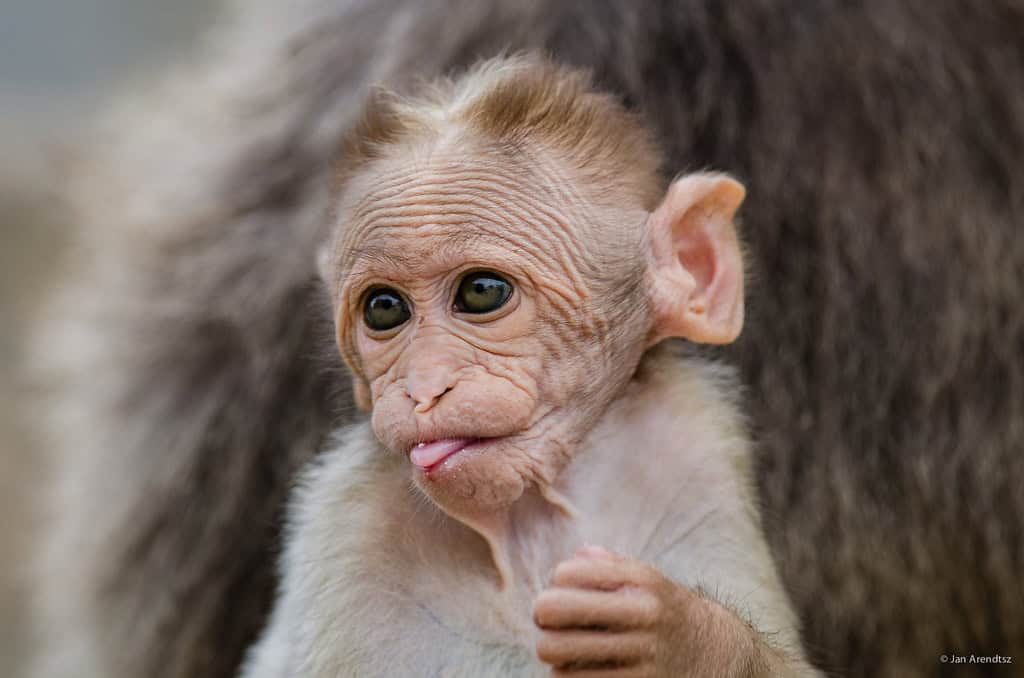
The bonnet macaque’s transition to urban living represents a fascinating example of wildlife adaptation in the Anthropocene era, offering valuable insights into how some species can adjust to human-dominated landscapes. Their story reflects the broader challenges of conservation in rapidly developing countries, where traditional approaches focused solely on protected areas prove insufficient. As India continues its trajectory of urbanization, bonnet macaques will likely remain permanent fixtures in its cities, with their distribution and abundance shaped by the complex interplay of habitat availability, human tolerance, management interventions, and their own remarkable adaptability.
Looking ahead, the successful integration of bonnet macaques into urban environments will require thoughtful policies that balance human needs with wildlife conservation. Emerging research suggests that peaceful coexistence is most achievable when management focuses on modifying human behavior and urban design rather than attempting to control or remove macaque populations. Cities that incorporate wildlife considerations into their development plans, maintain green spaces, implement effective waste management, and educate residents about appropriate interactions with macaques report fewer conflicts while preserving biodiversity. The story of India’s urban bonnet macaques ultimately demonstrates that as humans transform natural landscapes, we must be prepared to share our new environments with the wildlife species resilient enough to adapt alongside us.
- This Fish Has the Most Teeth in the Ocean—And Uses Them Well - August 9, 2025
- How Wolves Use Group Howls to Reunite With Pups - August 9, 2025
- 12 Dog Breeds That Form the Deepest Emotional Bonds with Their Owners - August 9, 2025

